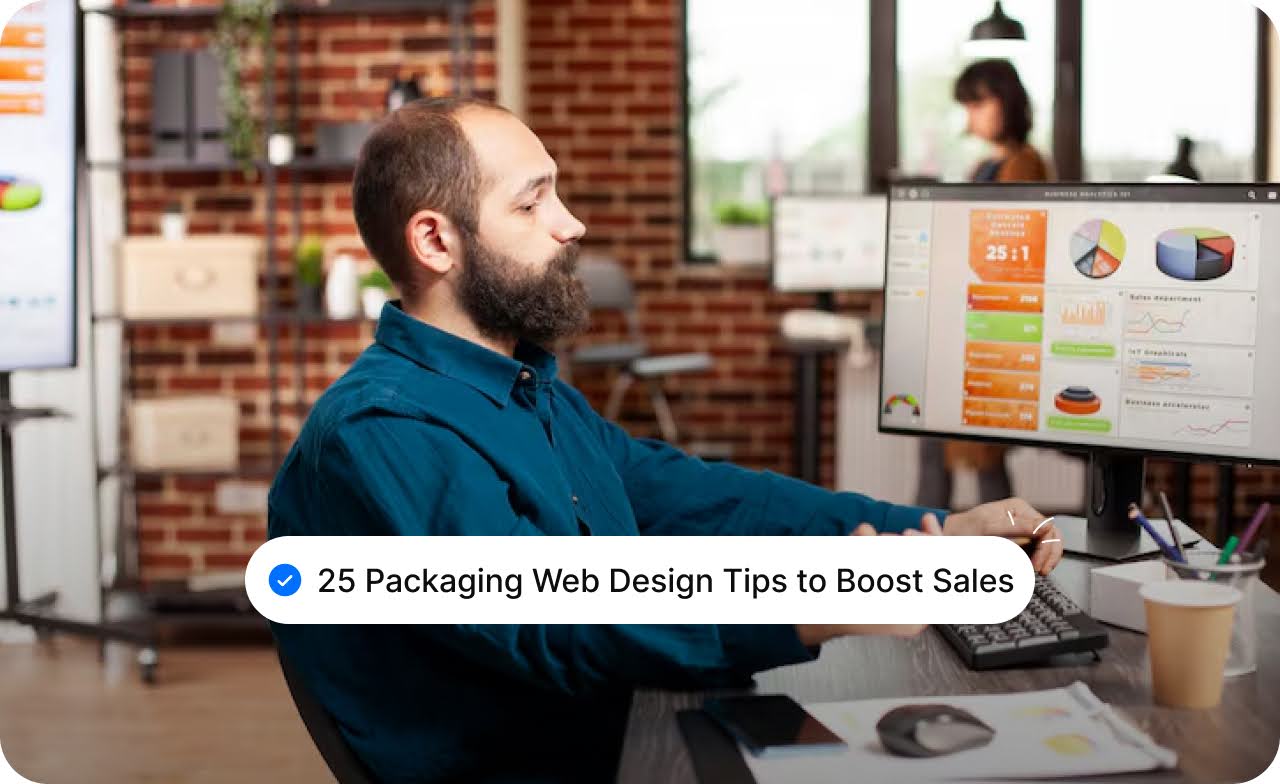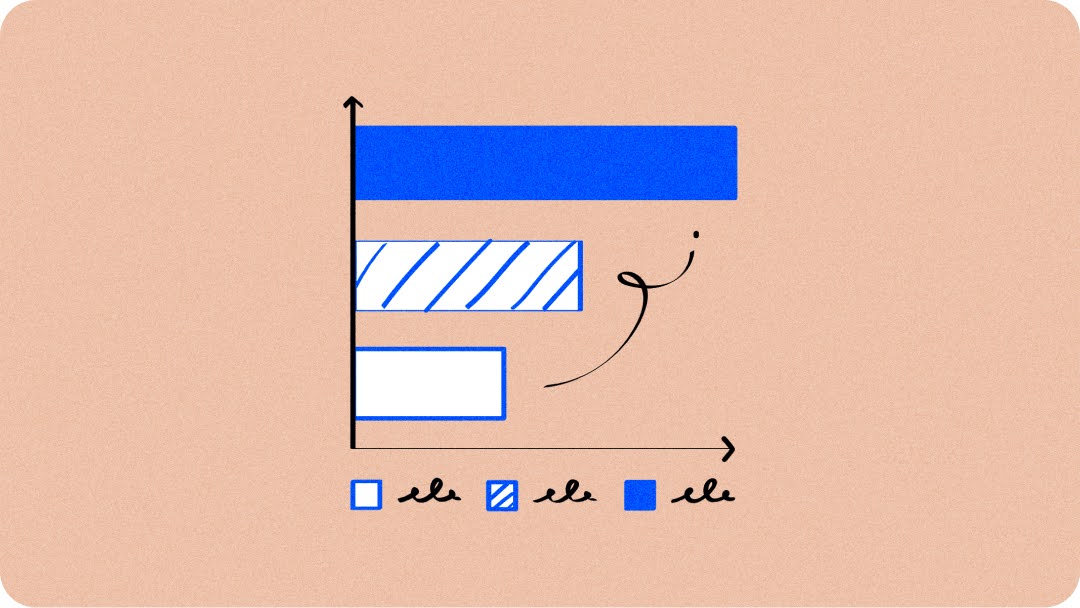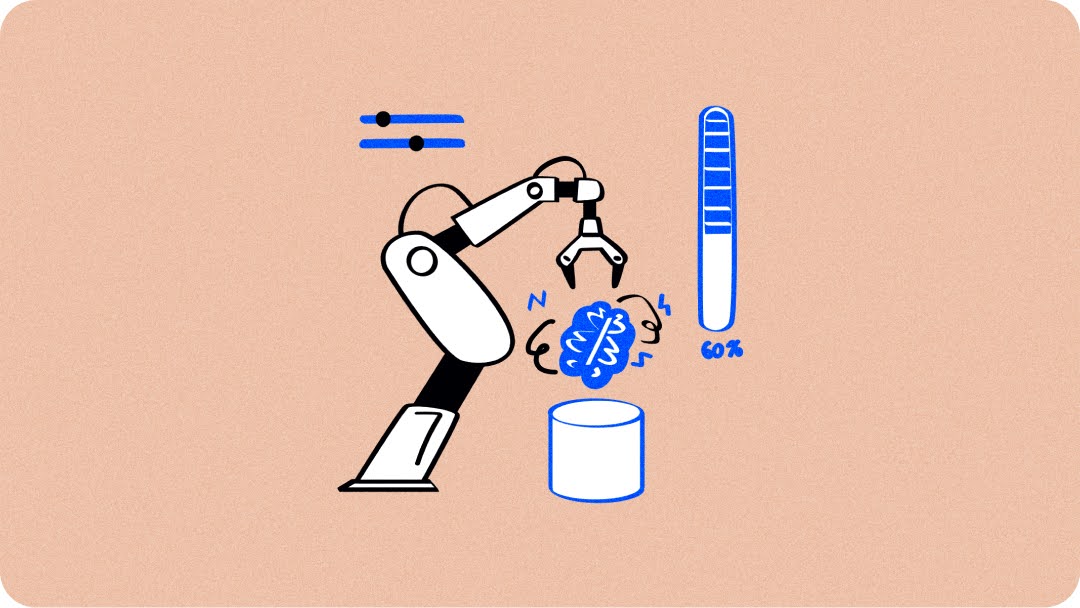Your packaging website is your first chance to impress potential clients. But many websites fail to capture attention. They’re either cluttered or don’t showcase the creativity behind your designs.
When clients land on your site, it should spark excitement and drive action. Your website needs to create an experience that encourages visitors to engage with your work and take the next step.
This guide will explore 25 expert tips to help you craft a website that not only looks great but converts visitors into clients. Ready to elevate your online presence? Let’s dive in!
1. Design a Homepage That Hooks Visitors Instantly
Your homepage is the first chance you get to make a strong impression.

Visitors should instantly feel your creativity and expertise the moment they land on your page.
- Showcase Your Best Work: High-quality visuals of your best packaging designs are a must. This is where you display your skills in full force.
- Brand Identity at the Forefront: From your logo to your color scheme, everything should speak your brand’s language. This is where your story begins.
Your homepage is the starting point of your story; it’s where visitors first meet you. When done right, it’s a conversation that gets them interested in what’s to come.
2. Use Call-to-Actions (CTAs) That Make People Click
Visitors arrive with curiosity, but without the right guidance, they’ll be unsure what to do next. That’s where CTAs come in.
- Prompt the Next Step: Use simple, actionable phrases like “Request a Quote” or “View Our Portfolio.”
- Strategically Placed: Position these CTAs right after visitors engage with your designs, so they know exactly what to do next.
A well-placed CTA shows visitors how to take the next step in working with you.
3. Keep Navigation Simple
Great web design is focused on functionality. If visitors can’t find what they need quickly, they’ll leave.
- Easy-to-Find Sections: Make it simple for visitors to navigate your portfolio, services, and contact info.
- Intuitive Flow: Visitors shouldn’t have to think twice about where to click next. A well-organized site should guide them effortlessly.
When a visitor lands on your site, they should feel like they’re walking down a clear path, knowing exactly where to go and how to get there.
4. Optimize Your Site for Mobile Users
With more than half of all web traffic coming from mobile devices, your website needs to work seamlessly on smartphones and tablets.

- Responsive Design: Your site should adjust to any screen size, ensuring a smooth experience whether on a phone, tablet, or desktop.
- Quick and Easy Navigation: Mobile design should make it easy to browse and explore your portfolio, no matter where your visitors are.
Mobile-first design is about making sure your visitors can access your content whenever and wherever they need to.
5. Keep Your Content Fresh and Updated
A stagnant website can make your brand seem outdated. Keep your content fresh to show you’re active and engaged.
- Update Portfolio: Regularly add new work to your portfolio to reflect your latest achievements.
- Blog or News Section: Keep a blog or news section where you share industry insights, new projects, or packaging trends.
A website that feels fresh and current shows visitors that your brand is alive, active, and ready to innovate.
6. Make Your Website Load Fast, Every Second Matters
A slow website can make visitors lose interest before they even see your work.
- Optimize Your Images: Compress images to speed up load times without sacrificing quality.
- Use Caching: Make returning visits faster by saving elements for later use.
Even seconds matter. A fast-loading website will keep visitors engaged and on your site longer, increasing the chance they’ll explore your work further.
7. Showcase Your Work with a High-Quality Portfolio
Your portfolio is the heart of your website. This is where potential clients see the best of your work, but it’s also your opportunity to tell the story behind each design.
- High-Quality Images: Display your work in the best light, using clear, detailed images.
- Include Case Studies: Go beyond just photos, tell the story of each design. Explain the challenges you faced and how your design solutions helped solve them.
A portfolio should narrate your design journey and the impact it made.
8. Make Your Designs Interactive with 3D Mockups
Nothing makes a design feel real like seeing it in action.
- Interactive 3D Models: Allow visitors to rotate, zoom, and explore your packaging designs from all angles.
- Real-World Applicability: Visitors can get a true sense of your packaging’s texture and feel.
This is where your packaging truly comes to life, and visitors can experience it in a way that feels real and tangible.
9. Engage Visitors with Interactive Features
Engagement is about making visitors feel like they’re part of your creative process.
- Interactive Features: Use sliders to show before-and-after designs or mockups that let users interact with your designs.
- Deeper Involvement: These features allow visitors to engage with your packaging and explore different versions of your work.
The more interactive your website is, the more engaged your visitors will feel, making them more likely to inquire about your services.
10. Tell a Story with Your Packaging Designs
Packaging is about the story behind it.

- Narrate the Journey: Share the process, from the first sketch to the final product. Show how your designs evolved.
- Engage Emotionally: Visitors want to feel connected to your work. Let them understand the thought process behind every design decision.
When you tell a story, your packaging becomes a part of a bigger narrative that visitors can connect with.
11. Highlight Sustainability in Your Designs
Sustainability is now a requirement. More consumers are looking for brands that care about the environment.
- Eco-Friendly Design: Highlight the sustainable materials and minimalistic designs you use.
- Green Messaging: Show how your packaging not only looks great but also aligns with eco-conscious values.
Clients today want packaging that also aligns with their values. Make sustainability a core part of your brand message.
12. Use Consistent Branding Across Your Website
Brand consistency builds trust. Your website should reflect your brand’s unique personality, from fonts to imagery. Visitors should instantly recognize your brand's style and feel confident that your packaging designs align with your identity.
- Coherent Design: Ensure your website mirrors the branding found in your packaging, making the experience seamless.
- Visual Identity: Use consistent color schemes, typography, and logo placement to solidify your brand.
When your branding is consistent, it creates a professional and trustworthy image that visitors can connect with.
13. Prioritize User Experience (UX) Above All
Great design refers to how things work. User experience (UX) should be at the core of your website's design.
- Easy Navigation: Ensure users can easily find what they need without confusion.
- Fast and Smooth: Every click should lead somewhere meaningful.
By prioritizing UX, you create a site where visitors feel comfortable and guided, leading them naturally to the next step in their journey with your brand.
14. Add Testimonials to Build Trust
Real feedback from satisfied clients provides social proof. A well-placed testimonial can turn a curious visitor into a loyal client.
- Feature Reviews: Display testimonials that highlight your design expertise and the impact of your packaging.
- Before and After: Show how your packaging designs solved problems for previous clients.
Visitors are more likely to trust you when they see positive experiences from others.
15. Leverage Video to Showcase Your Process
Video is a powerful tool for engaging your audience. A short video showcasing your design process or a time-lapse of packaging coming to life can captivate visitors in a way static images cannot.
- Behind-the-Scenes: Let visitors in on how you approach your designs and the care you put into each project.
- Packaging in Action: Show your packaging designs being used in real life to highlight their functionality.
A video adds a dynamic element to your website and keeps visitors hooked longer.
16. Make Your Portfolio Easy to Filter
A large portfolio is great, but it’s important that visitors can find what they’re looking for quickly.
- Organized Categories: Sort your designs by type, industry, or style.
- Search Functionality: Add a search bar so visitors can easily find specific projects.
By allowing users to filter through your work, you make the experience personalized and efficient.
17. Use High-Quality Imagery to Capture Detail
Your packaging designs deserve to be shown in the best light. Low-quality images can give the wrong impression.
- Detailed Shots: Zoom in on textures, prints, and design elements to showcase the intricate details.
- Professional Photography: Invest in professional photos that highlight your work from the best angles.
High-quality imagery makes your packaging designs look polished and professional, boosting their appeal to potential clients.
18. Make Your Contact Information Easily Accessible
When visitors are ready to take the next step, you don’t want them scrambling to find your contact details.
- Prominent Contact Info: Place contact buttons or information on every page for easy access.
- Clear Call to Action: Have a “Get in Touch” CTA that’s visible and inviting.
Visitors should never feel frustrated trying to reach out to you. Making it easy increases the likelihood of conversions.
19. Integrate Social Media to Build Community
Social media is a powerful tool for growing your brand. Display your social media feeds or links on your website to show potential clients where they can connect with you.
- Showcase Engagement: Highlight your active social media presence and let visitors see your community.
- Link to Platforms: Add clear, visible links to your social profiles, especially visual platforms like Instagram and Pinterest.
By integrating social media, you add credibility and make your website feel more connected to your audience.
20. Use Animation to Add Personality
Subtle animation can bring your website to life without overwhelming your visitors.
- Hover Effects: Add animated hover effects to buttons or images for a playful feel.
- Transitions: Use smooth page transitions to keep the experience fluid.
Animations add a layer of interactivity that can make the browsing experience more enjoyable and engaging.
21. Create an Engaging About Us Page
An “About Us” page is more than just a brief company history; it’s where you can connect on a personal level with potential clients.
- Tell Your Story: Share why you’re passionate about packaging design and what sets you apart.
- Meet the Team: If applicable, introduce your team to give a human touch to your brand.
A compelling About Us page builds rapport and trust, making it easier for visitors to feel comfortable with your services.
22. Offer Clear Pricing (When Possible)
While some packaging designers prefer not to list prices upfront, providing a price range can help manage client expectations.
- Transparency: Provide clear pricing for basic packages or services, so clients know what to expect.
- Tiered Options: Offer a range of services at different price points to cater to various budgets.
Clear pricing information reduces friction and helps visitors decide if they’re ready to work with you.
23. Provide an FAQ Section to Address Concerns
Anticipate common client questions and answer them upfront to save time for both you and potential clients.
- Cover Common Queries: Address questions about pricing, timelines, and processes.
- Build Trust: A well-thought-out FAQ section shows that you’re experienced and care about your clients’ needs.
A well-organized FAQ section answers questions before they become barriers to conversion.
24. Make Your Website Secure
Security is crucial for building trust with your visitors. Make sure your website is secure and visibly so.
- SSL Encryption: Ensure your website uses SSL encryption to protect user data.
- Security Badges: Display any certifications or security badges to give visitors peace of mind.
A secure website not only protects you and your clients but also instills trust in visitors.
25. Streamline the Client Onboarding Process
Creating a seamless and clear client onboarding experience can make all the difference in how your potential clients perceive your service. A simple, well-structured onboarding process builds trust and sets expectations right from the start.
- Clear Process Flow: Use easy-to-follow visuals to break down the onboarding journey step by step.
- Guide Clients Through Each Stage: From initial consultation to project delivery, ensure clients know exactly what to expect.
- Set Expectations: Let potential clients know how long each phase will take and what’s involved.
- Showcase Your Professionalism: A smooth onboarding experience reflects your professionalism and attention to detail.
By making onboarding clear and simple, you’ll make clients feel confident in choosing you, helping to turn them into long-term partners.
Transform Your Packaging Website into a Client Magnet
A website showcases your work, draws people in and keeps them coming back. By following these 25 expert packaging web design tips, you will be creating a digital portfolio and building a powerful tool that engages, inspires, and converts visitors into loyal clients.
From the design layout to seamless functionality, every choice you make should reflect your unique brand and make a lasting impression.
It’s important to have a site that works for you, attracting the right clients and driving real business growth.
So, why settle for ordinary when your website can be extraordinary?
FAQs
Q1. What makes packaging design so important for my product?
A1. Packaging design is more than just a protective layer; it's the first impression your product makes on a potential customer. A well-designed package can communicate your brand's story, values, and quality, influencing purchasing decisions and setting your product apart in a crowded market.
Q2. How do I choose the right materials for my packaging?
A2. Selecting the right materials involves balancing functionality, cost, and brand image. Consider factors like product fragility, shelf life, and environmental impact. For instance, eco-friendly materials might appeal to environmentally conscious consumers, while premium finishes can enhance the perceived value of luxury items.
Q3. Should my packaging design be consistent across all products?
A3. Consistency in packaging design helps build brand recognition and trust. While variations can exist to distinguish different products, maintaining core elements like logo placement, color scheme, and typography ensures a cohesive brand identity across your product line.
Q4. How can I make my packaging stand out on crowded shelves?
A4. To capture attention, focus on unique design elements that reflect your brand's personality. Bold colors, innovative shapes, and interactive features can make your packaging eye-catching. Additionally, clear messaging and storytelling can create an emotional connection with consumers.
Q5. What role does packaging play in e-commerce?
A5. In e-commerce, packaging serves as both a protective barrier during shipping and a branding tool upon delivery. Thoughtful packaging can enhance the unboxing experience, leading to positive reviews and repeat customers. It's an opportunity to reinforce your brand's commitment to quality and customer satisfaction.
Q6. How do I ensure my packaging complies with regulations?
A6. Compliance with industry regulations is crucial to avoid legal issues. Research and understand the specific requirements for your product category, such as labeling laws, safety standards, and environmental guidelines. Consulting with experts or legal advisors can help navigate these complexities.
Q7. Can sustainable packaging boost my brand's image?
A7. Embracing sustainable packaging can resonate with eco-conscious consumers and enhance your brand's reputation. Using recyclable or biodegradable materials, minimizing waste, and communicating your sustainability efforts transparently can build consumer trust and loyalty.




















.webp)








.webp)
.svg)


.svg)
.svg)
.svg)







.svg)